| Synchaeta pectinata: this very common pelagic rotifer can be identified by the two pronounced tubular antennae on the frontal margin (arrows). The interspace between these two antennae is wide (width ≈ 2x antenna length), which is in contrast to Synchaeta oblonga (with small interspace) (3) |
| |
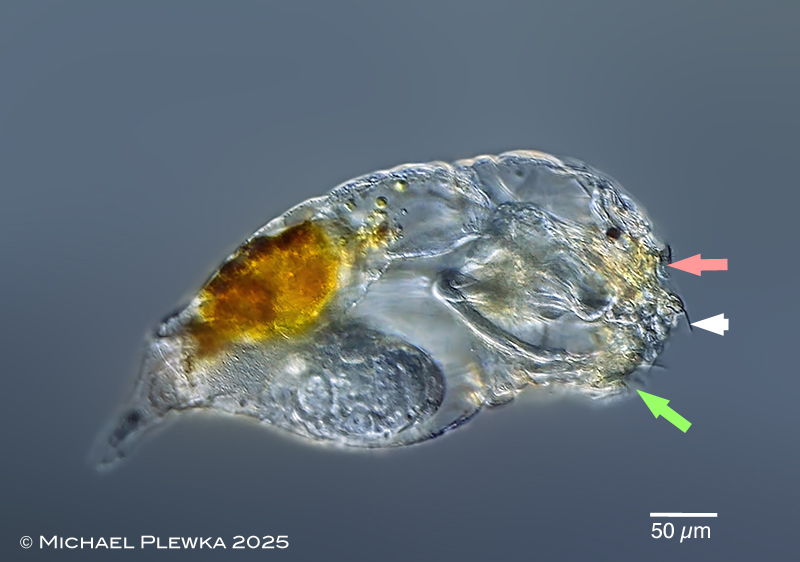 |
| Synchaeta pectinata; lateral view, optical logitudinal transect. The arrows point to the corresponding ciliary rows (see image below); the arrowhead points to the sensory cilia of the right tubular antenna. (5) |
| |
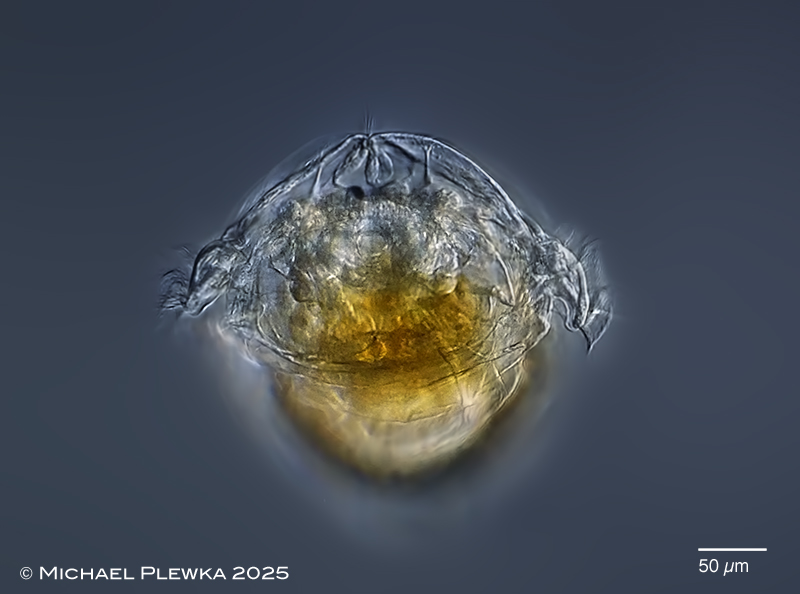 |
| Synchaeta pectinata; frontal/ ventral view, focal plane on the dorsal antenna and the auricles. The metachronal movement of the cilia in both auricles is the same: counter clockwise (when viewed from front), i.e .the metachronal movement is not symmetric. So these cilia might be homologous to the trochal cilia of Bdelloidea / Gnesiotrocha. (5) |
| |
| |
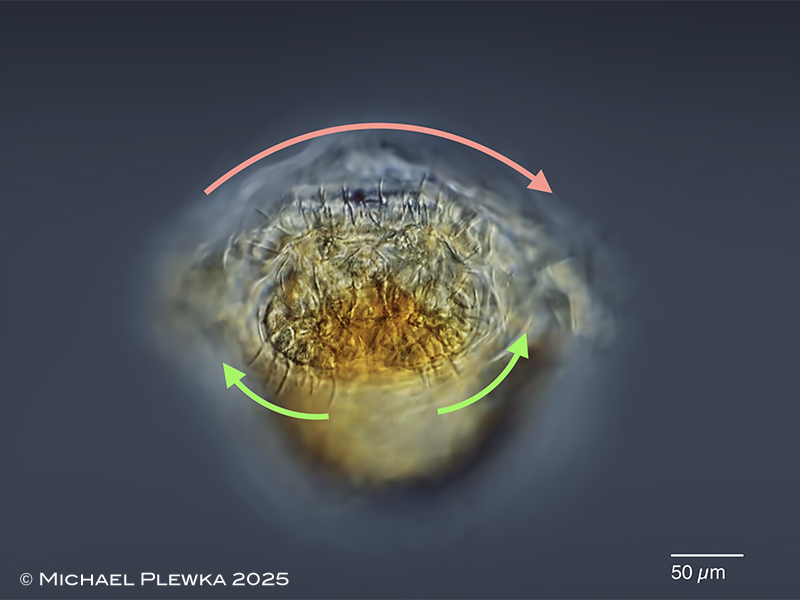 |
Synchaeta pectinata; frontal view of the "circular" part of the corona, which consists of 3 ciliary rows. The metachronal movement of the dorsal cilia row is clockwise in frontal view (pink arrow); in conjunction with the effective stroke of these cilia, which is backwards, the metachronal movement is laeoplectic. This is in contrast to the trochal cilia of rotifers of Gnesiotrocha and bdelloid rotifers (with dexioplectic metachronal movement).
The effective stroke of cilia of the two ventral rows are also beating backwards, but the direction of the metachronal movement is different for both parts as indicated by the green arrows. So there is dexioplectic and laeoplectic metachronal movementin these rows. (5) |
| |
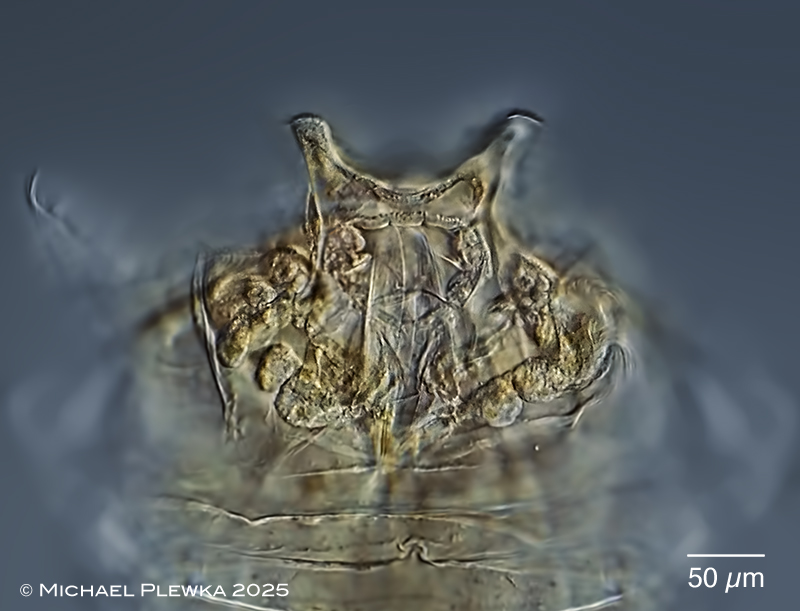 |
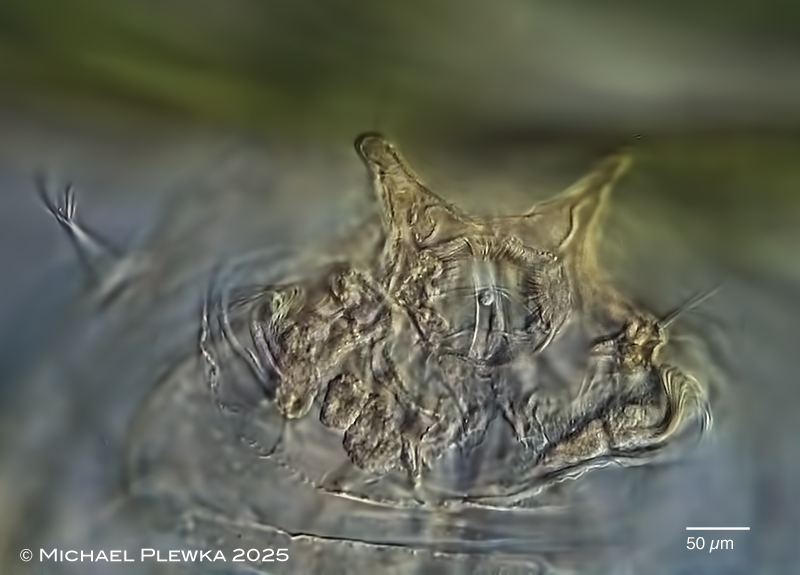 |
| Synchaeta pectinata; frontal/ ventral view; aspects of the oral opening of two different specimens, different focal planes. (5) |
| |
| |
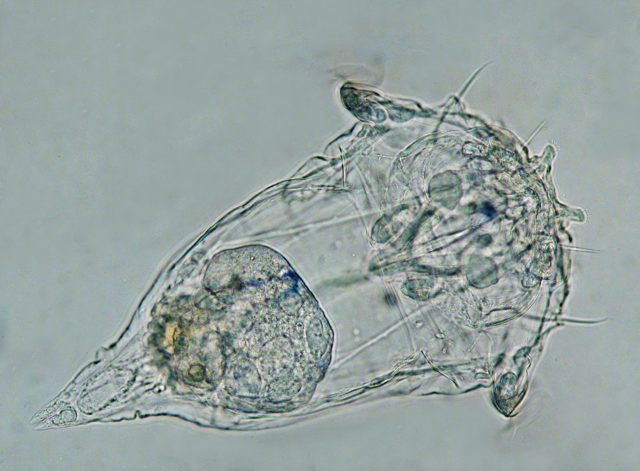 |
| Synchaeta pectinata: another specimen from (2). apical field strongly convex |
| |
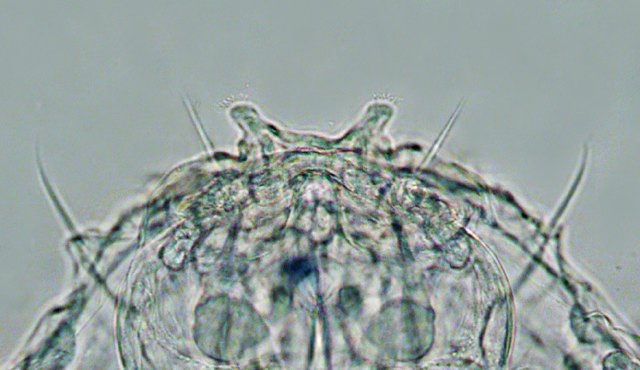 |
| Synchaeta pectinata: detail image of the head showing the cilated antennae and the four styles. (2) |
| |
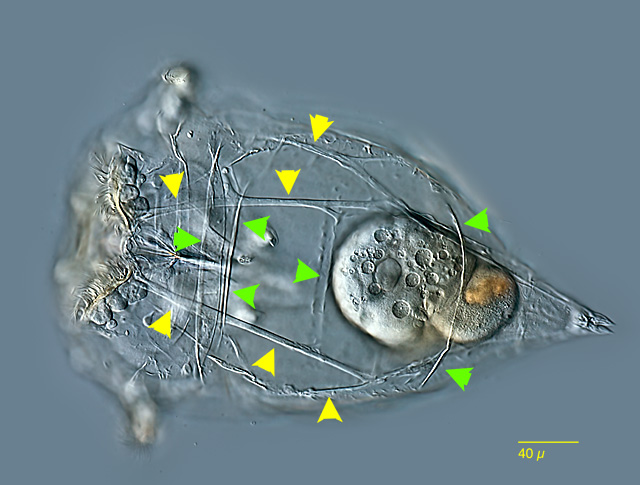 |
| Synchaeta pectinata: focal plane on the ventral longitudinal (yellow arrowheads) and transversal (green arrowheads) muscles. The toes are minute. (3) |
| |
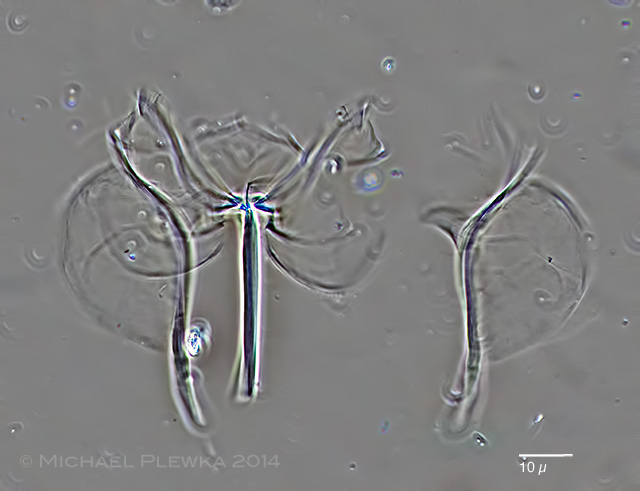 |
| Synchaeta pectinata: trophi (3) |
| |
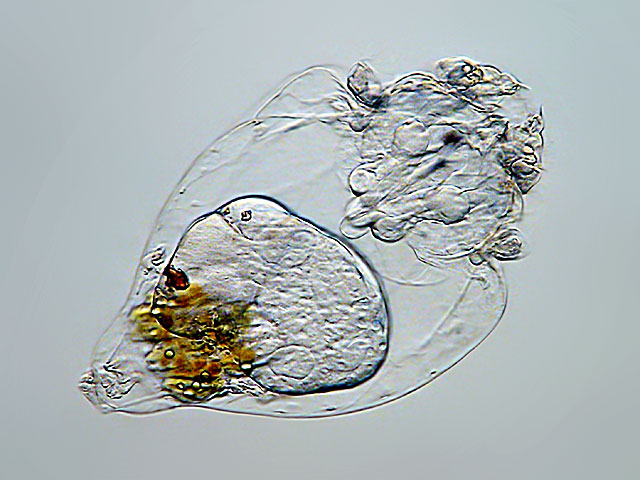 |
| Synchaeta pectinata: sometimes the trophi are protruded. (2) |
| |
 |
| Synchaeta pectinata: amictic / resting egg. Because of the spines this egg Synchaeta maybe confused with the amictic egg of Lepadella sp., but the spines are bifurcate at the top, whereas in Lepadella the spines are bifurcate at the base. (1) |
| |
| |
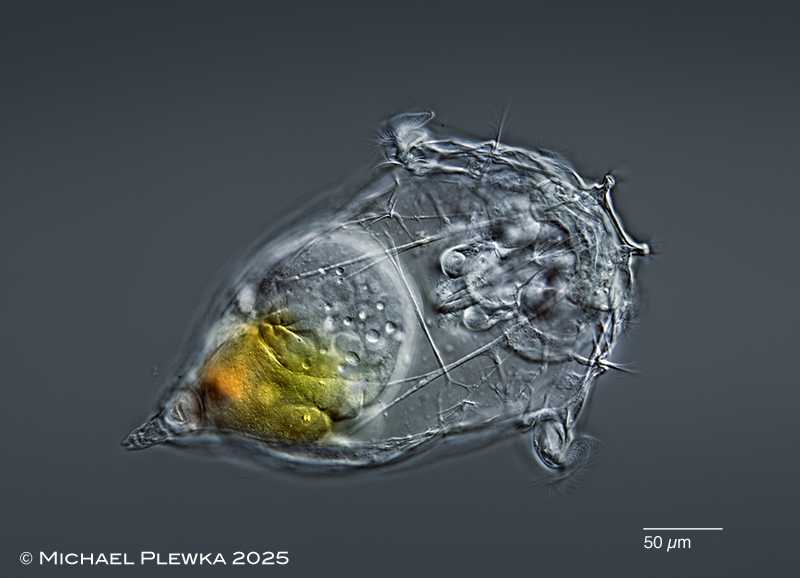 |
| Synchaeta pectinata: specimen from (7) |
| |
| |
| ecology |
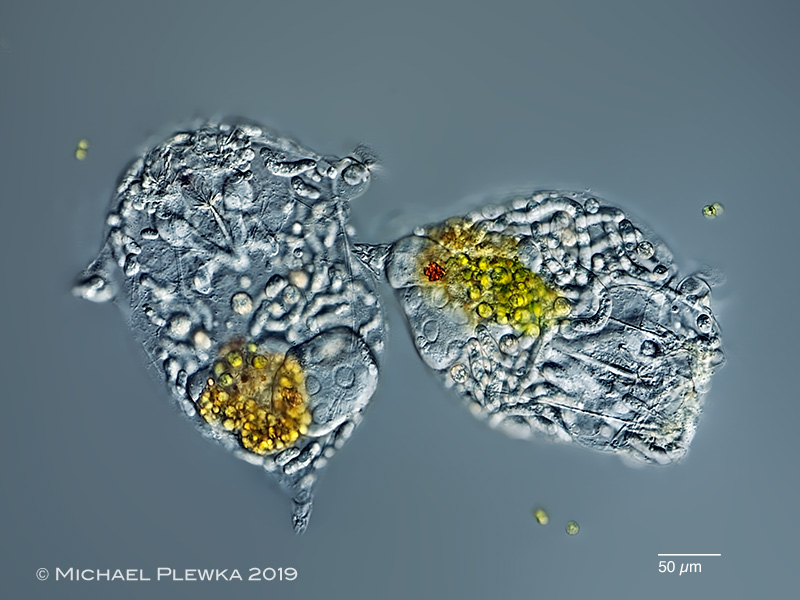 |
| Synchaeta pectinata: specimens with fungal parasites (4) |
| |
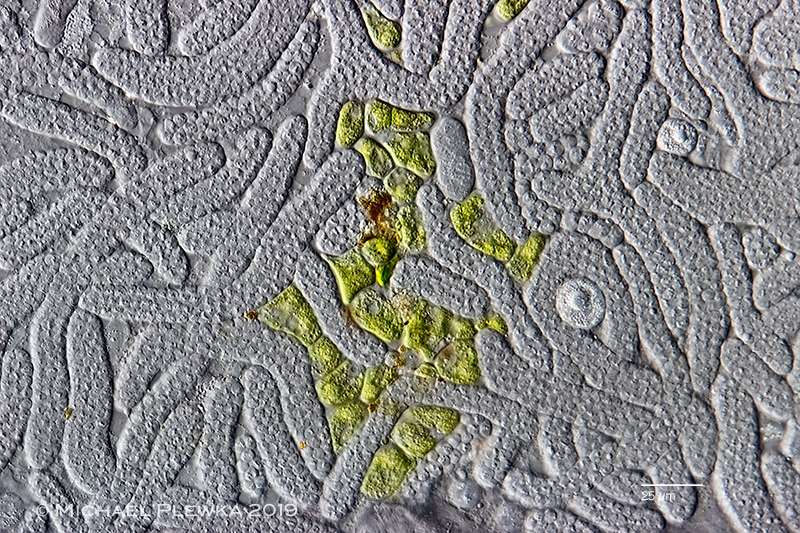 |
| Synchaeta pectinata: fungal parasites in compressed specimen (4) |
| |
| |
| |
| |
| |
|
|
| |
| |
|
|
| |
| |
|
|
| |
| |
|
|
| |
|
|